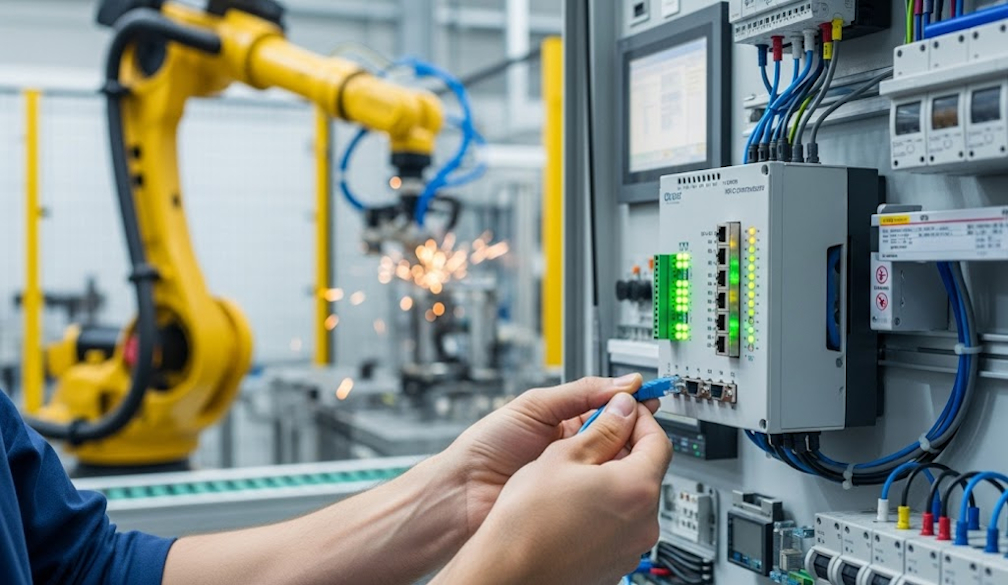I/O Controller: The Core of Modern Industrial Automation

In today’s rapidly evolving industrial landscape, automation plays a critical role in improving productivity, precision, and safety. At the centre of this complex ecosystem is a component often overlooked outside of engineering circles—the I/O controller. This powerful device acts as the central nervous system of automated systems, managing communication between sensors, actuators, and programmable logic controllers (PLCs).
Without a reliable I/O controller, the coordination of machines, systems, and digital signals would become inefficient or entirely unmanageable. Whether it’s in a factory, a data centre, or a building management system, the I/O controller ensures that digital and analog information is transmitted, received, and interpreted accurately.
Understanding What an I/O Controller Is
The I/O controller (Input/Output controller) is a hardware interface that connects external devices or field equipment to a central control system. It manages both incoming signals (input) from devices like sensors, switches, or buttons, and outgoing signals (output) to devices such as relays, motors, lights, and valves.
These controllers are crucial in industrial automation and are typically embedded in PLCs or used as stand-alone modules. They interpret commands from the central processor and ensure that the right signal reaches the right device at the right time.
How I/O Controllers Work
An I/O controller operates by translating commands between the central processor and the connected field devices. Inputs might include temperature readings, pressure sensors, or position switches. The controller processes this data and triggers appropriate outputs such as turning on a fan, moving a robotic arm, or sounding an alarm.
Communication can occur through a variety of protocols, including Modbus, Profibus, EtherCAT, and more. Modern I/O controller units often include features like signal conditioning, filtering, and diagnostic monitoring to ensure optimal performance.
Types of I/O Controllers
There are two primary types of I/O controller units: digital and analog.
Digital I/O controller units handle on/off signals like switches, push buttons, or light sensors. These are the most common in applications that rely on binary control.
Analog I/O controller units manage variable signals such as voltage or current. These are used when more precision is needed, such as controlling speed, pressure, or temperature.
Additionally, I/O controllers can be classified based on their configuration: distributed or centralized. Distributed I/O controller systems place modules closer to the equipment, reducing wiring costs and increasing speed. Centralized systems house all I/O in one location, simplifying maintenance.
Why I/O Controllers Are Critical in Automation
Automation is only effective when each component communicates accurately and reliably. The I/O controller plays a pivotal role by ensuring that feedback from machines and sensors is received in real time and that control signals are delivered without delay.
This real-time communication helps in preventing malfunctions, improving system efficiency, and maintaining safety standards. In sectors such as manufacturing, pharmaceuticals, food processing, and energy, the reliability of an I/O controller can directly affect product quality and operational continuity.
Applications of I/O Controllers in Industry
I/O controller systems are used across a broad range of industries. In manufacturing, they control assembly lines, manage robotic operations, and oversee quality control mechanisms. In HVAC systems, they regulate temperature, monitor airflow, and ensure optimal performance.
In energy management, I/O controller modules help balance load distribution and power generation. In building automation, they handle lighting, security, and environmental systems. Their applications continue to grow as industries adopt more sophisticated control systems.
Features to Look for in a High-Performance I/O Controller
Selecting the right I/O controller depends on the specific needs of the application. Some key features to look for include high channel density, modular design for scalability, multiple communication protocols, diagnostic functions, and built-in safety features.
Remote monitoring capability, hot-swapping support, and robust signal integrity are also essential in modern systems. The more adaptable the I/O controller, the better it can support the long-term goals of automation and digital transformation.
Challenges and Considerations
Despite their utility, I/O controller systems can present challenges. Integration with legacy systems, ensuring compatibility across platforms, and managing network latency are common concerns. Environmental factors like dust, humidity, and temperature extremes must also be considered, particularly in harsh industrial settings.
Proper selection, installation, and maintenance are vital. Using certified and high-quality I/O controller products from reputable suppliers can mitigate many of these challenges.
The Future of I/O Controllers in Smart Automation
With the rise of Industry 4.0 and the Internet of Things (IoT), the I/O controller is evolving into a smarter, more connected component. Modern controllers are becoming more compact, energy-efficient, and capable of edge computing, enabling faster decision-making and reduced reliance on central systems.
As automation systems become more decentralised and reliant on real-time analytics, the role of the I/O controller will continue to grow in complexity and importance.
Conclusion: The Indispensable Role of the I/O Controller
No automation system can function without accurate, real-time communication between devices—and that’s exactly what the I/O controller facilitates. From managing basic signals to supporting complex process control, these devices are at the core of today’s intelligent systems.
Whether you’re working on a factory floor, overseeing a smart building, or implementing a new industrial control system, choosing the right I/O controller will ensure performance, precision, and peace of mind.

